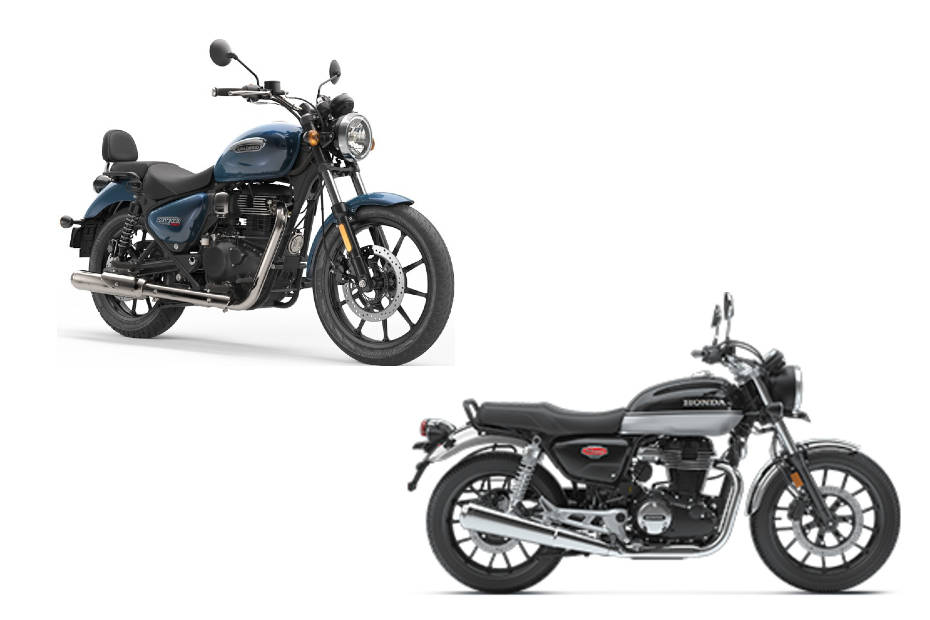Royal Enfield Meteor 350 vs Honda H’ness CB350: Image Comparison
Modified On Nov 7, 2020 11:15 PM By Zaran Modyfor Royal Enfield Meteor 350
- 4737 Views
Two of the most exciting modern classics face off!

After years in the making, Royal Enfield has finally launched its highly-anticipated Meteor 350. And the pricing means that it squares up against the equally exciting Honda H’ness CB350 in the battle of modern classics. Today, we’re taking a look at how the two compare in a series of images:


There’s a definite difference in stance between the two bikes, with the Honda taking on a more upright roadster look while the Meteor sports a low and swooping cruiser form.


Honda has thrown in a snazzy LED headlight and LED indicators on the H’ness, while the Meteor has to make do with halogen units. Its DRL is a smart-looking LED ring, though.


Both bikes have pretty simple yet stylish tail ends, with the Honda the more retro of the two while the Meteor’s tail lamp has a more modern touch.


Instrumentation is also similar, with both bikes sporting Bluetooth-equipped digi-analogue designs. But the Meteor ups the ante by throwing in the Tripper navigation pod that offers turn-by-turn instructions on the go.


RE has shown great attention to detail by opting for these lovely old-school rotary switches on the Meteor 350. Honda meanwhile has gone down a more conventional route for the switchgear on the H’ness, with directional buttons to cycle through the menus and functions.


The heart of the matter: the engines. The 349cc displacements are pretty much identical but the CB gets a more advanced 4-valve head compared to the Meteor’s 2. As a result, it manages slightly better output figures of 21.07PS and 30Nm compared to 20.5PS and 28Nm.


The Honda’s square-ish fuel-tank and the RE’s teardrop-shaped unit are both identically voluminous at 15 litres. On the Meteor, this translates into nearly 600 highway kilometers on a full tank!


While the H’ness has the larger front brake disc (310mm vs 300mm), the Meteor sports the larger rear disc (270mm vs 240mm). Both bikes sport a non-adjustable conventional telescopic fork, and preload-adjustable twin shock absorbers.
